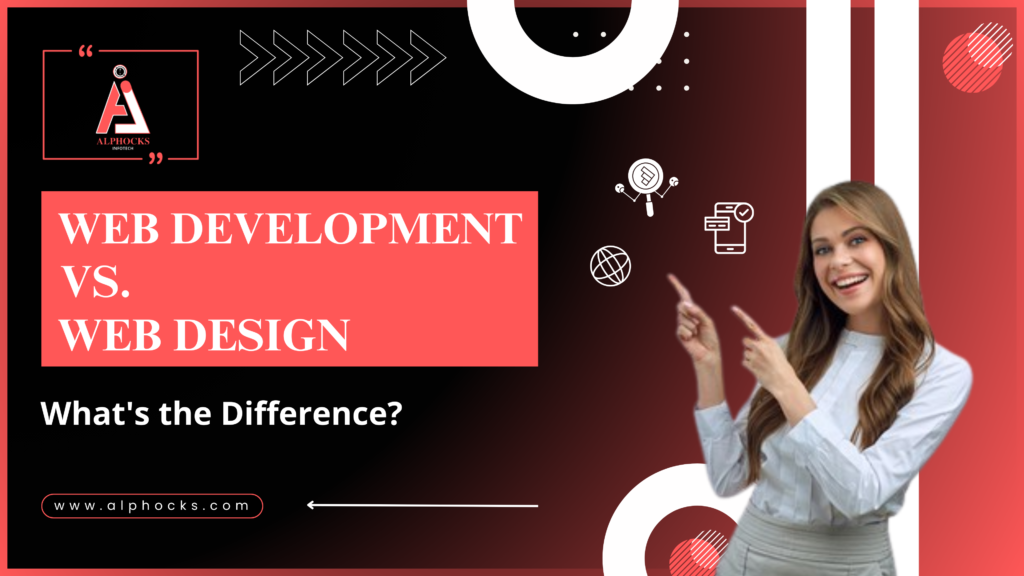SEO web design involves creating visually attractive websites that are optimized for search engines. This method guarantees that a website not only draws in traffic with its design but also achieves high rankings in search engine results pages (SERPs). SEO web design incorporates key components of search engine optimization (SEO) during the web design process to enhance website visibility, usability, and appeal.
What is the Importance of SEO in Web Designing?
SEO web design improves your website’s visibility in search engine results. Having a higher ranking for your website will result in increased traffic, which can translate into more sales opportunities from new customers. Furthermore, a properly crafted website that is optimized for search engines provides an improved user experience. Visitors can quickly locate wanted items, enhancing their brand experience in a positive way.
Websites that implement SEO techniques are more probable to achieve higher rankings on search engines such as Google. This increased position brings in additional natural website visitors. Appearing on the top search results boosts the credibility and trustworthiness of your website for users. Having a strong SEO web design in a competitive online market allows you to stand out from competitors and expand your reach to a wider audience.
10 Ways to Optimize for Web Design and SEO
1. Ease of use on mobile devices
Having a mobile-responsive layout is essential due to the fact that most internet users visit websites on their phones. Google mainly relies on the mobile version of content for ranking and indexing, a method known as mobile-first indexing. Make sure your website is able to adapt to various screen sizes and resolutions, ensuring it is responsive. Evaluate your website’s compatibility with mobile devices by utilizing tools such as Google’s Mobile-Friendly Test.
2. Speed of the Page
The speed of a webpage is an important factor in determining its ranking on search engines. A site that loads slowly can irritate users, resulting in increased bounce rates and decreased engagement. Reduce image size, optimize caching, condense CSS, JS, and HTML, and employ CDN to enhance loading speeds.
3. Structure of a URL
Clear, informative URLs assist search engines in comprehending the content on your pages. They also simplify the navigation of your website for users. Utilize concise URLs with relevant keywords that convey the content of the page. Prevent using lengthy URLs with unnecessary parameters to avoid confusion.
4. Site Structure and Navigation
An efficient site structure aids search engines in crawling and indexing your website more effectively. It also enhances user experience by simplifying the process for visitors to locate desired information. Employ a structured arrangement with primary divisions and secondary divisions. Make sure that each page can be reached with just a few clicks starting from the homepage. Integrate breadcrumb navigation to assist users in determining their position on the website.
5. Optimizing the Content
SEO requires top-notch, pertinent content. It assists search engines in comprehending the purpose of your site and adds worth for your users. Perform keyword analysis to discover suitable terms and phrases. Integrate these keywords seamlessly into your content, within headings, subheadings, and body text. Make sure your content is of high quality, informative, and interesting.
6. Meta Tags and Descriptions
Meta tags and descriptions inform search engines about the content of your website. They also impact the rates at which users click on links in search engine results pages. Create distinctive and detailed meta titles and descriptions for every page. Make sure to use important words and keep the explanations brief and engaging when paraphrasing the text.
7. Optimizing Images

Optimized images can boost loading speed of pages and enhance user experience holistically. They also offer extra chances for appearing in image search rankings. Utilize descriptive file names with keywords for images. Include alternative text to explain the image content, aiding search engines in comprehending and categorizing the images. Reduce file sizes without losing quality by compressing images.
8. Linking Within a Website
Internal links assist search engines in comprehending the layout and organization of your website. They also aid in spreading link equity throughout your website, enhancing the ranking potential of specific pages. Internal links should be labeled with descriptive anchor text for better user experience and SEO benefits. Include relevant internal links to keep users interested and decrease bounce rates on your site. Make sure that significant pages can be easily reached through internal links.
9. Safe Webpage (HTTPS)
Security plays a crucial role in the ranking criteria for search engines. An HTTPS-enabled secure website safeguards user data and establishes trust with users. Acquire an SSL certificate and transition your website from HTTP to HTTPS. Consistently update and upkeep your security protocols to prevent threats.
10. Integration of Social Media Platforms
Social media signals have the potential to impact SEO by directing visitors to your website and boosting interaction. Incorporate social sharing buttons in your content to prompt users to share it on their social media platforms. Incorporate social media streams to ensure your content remains dynamic and captivating.
Creating an effective online presence requires paying careful attention to the SEO elements incorporated in web design. Integrating SEO guidelines during web design results in a website that is visually attractive, functional, user-friendly, and search engine optimized. Emphasizing factors such as mobile compatibility, speed of page loading, structure of URL, and optimization of content can greatly improve the performance and visibility of your website. Investing in SEO web design in a competitive digital environment can help you stand out and keep more visitors, leading to the success of your business.



